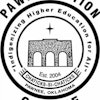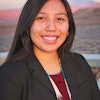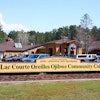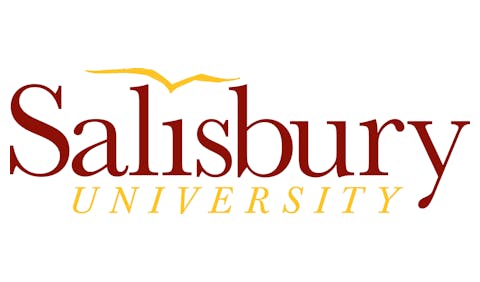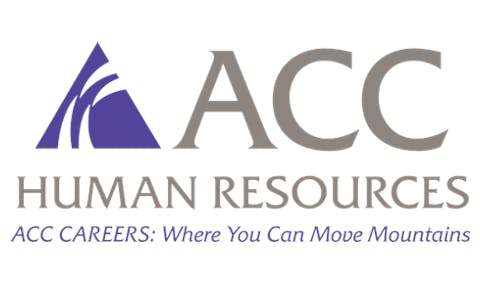The Arapaho word cenééteeyóó- vii means both blue and green.
That had puzzled Amy Crowell, who studied Arapaho at the University of Wyoming. Then she went for a hike. She noticed things – like the way the pine tree needles contained hues of both green and blue. The world started opening a little.
“[The language] has helped me to understand the world in a different way,” Crowell says.
Across the country, college students have an ever-increasing array of languages available for study, from Japanese to American Sign Language to Farsi. And in the past two decades, the United States’ own indigenous languages – Navajo, Ojibwe, Apache and hundreds of others – have taken up residence among their “foreign” language counterparts in some universities and tribal colleges.
While nearly 80 universities and tribal colleges offer Native American studies majors, according to the College Board, just five colleges – Diné College, Idaho State University, University of Alaska Fairbanks, Simon Fraser University and University of British Columbia (the latter two in Canada) offer majors in Native American languages.
In some cases, offering Native language programs at the university level is a last-ditch attempt to save the languages from extinction. Worldwide, linguists estimate that half of the world’s 6,000 languages will disappear within 100 years. Experts say that because the majority of native language speakers are passing away, almost all of these languages could be gone by 2050.
In the United States, languages such as Kutenai, Mandan or Osage, are now spoken only by a handful of elders – in some cases, only one person.
Native language courses vary from school to school. At the University of Wyoming, Crowell’s class was taught by an elder who spoke fluent Arapaho. Students there progress from beginning to intermediate to advanced levels, and eventually advanced students teach beginning students. The course is based on a native tradition of teaching, Crowell says.
Schools with immersion programs have claimed great success in helping students reach fluency. At Bay Mills Community College, a tribal school in Brimley, Mich., students’ desire for fluency in Ojibwe and Odawa resulted in an intensive, six-year language immersion program. The program, which is modeled after French immersion schools in Ontario and Quebec, aims to help students acquire 90 percent fluency, says program director Ted Holappa.
“I think it really boils down to cultural identity,” he says. “Our students really love their language, love their culture and love their communities. And they find that so much of that culture is embodied in the language.”
Demand for courses appears to remain steady, especially in areas where there are high concentrations of Native American students. For example, there are 70 students enrolled in the Bay Mills language program, including several satellite locations.
But some emphasize that indigenous languages are relevant to all students – not just Native Americans.
“I don’t think that folks in America today, native or non-native, really understand the profound diversity of native cultures,” says Dr. Martha Macri, the Rumsey Professor of California Indian Studies at University of California-Davis. “We’re used to looking at what we think is homogenized culture and in fact there are so many more details.”
Macri, who is Cherokee, works with students in a seminar course where they can choose to study any Native American language.
“Just looking at these languages builds community,” she says. “So much of native knowledge is contained in language. Language really is a window on the soul. It really does let you see how the human mind works.”
Dr. Nancy Bonvillain, a professor of anthropology and linguistics at Bard College at Simon’s Rock and author of books on the Mohawk language, says indigenous languages open up new avenues for linguistic study.
“From a linguist’s perspective, English, German, French – they’re very similar in terms of their structure,” she says. “Exposure to a language which is so different in structure would open up to people the idea of the diversity of languages, the diversity of the ways in which people think. People who speak different languages think about the world in so many different ways.”
There are cultural benefits, too. Crowell says she learned a great deal about historical events like the Sand Creek Massacre by learning an indigenous language. “The languages pull people together and help them learn who they are,” she says. “It’s a matter of supporting each other.”
Bonvillain remains cautiously optimistic about the impact of language revitalization efforts across the United States, noting that the success rate varies from community to community.
“I don’t think it’s likely to go from a community where there’s a quarter of the people who are native speakers to being a community of native speakers – at least within our lifetime,” she says. “Those kinds of programs are really going to end up with a very solid minority of people who speak the native language.”
She says it also depends on the way the language is used – communities where the indigenous language is used alongside other languages, in every day conversation and signage, for example, are much more likely to be successful in revitalizing and preserving their language.
© Copyright 2005 by DiverseEducation.com

